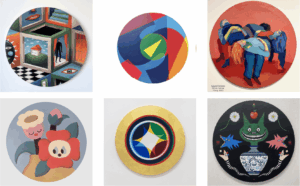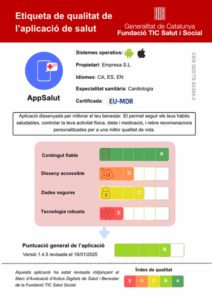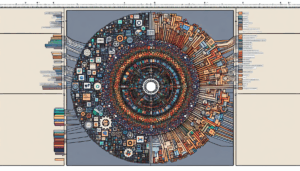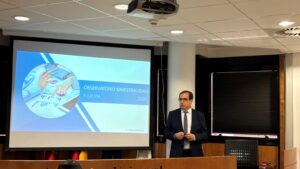Researcher Carlos Sánchez Somolinos, from the Institute of Nanoscience and Materials of Aragon (INMA), a joint center of the CSIC and the University of Zaragoza, is leading a pioneering research project that combines electro-writing with smart materials fusion for biomedical and soft robotics applications. The researchers have used for the first time stimuli-sensitive active materials, leading to active biomimetic structures with digitally programmable mechanical functions. The study, published in Advanced Materials, marks a milestone that could lay the foundation for cell cultures that accurately mimic living tissues.
The team has used for the first time stimuli-sensitive active materials, resulting in active biomimetic structures with digitally programmable mechanical functions. “Manufactured with suitable materials, these structures could serve as mechanically active biomimetic scaffolds, as opposed to the passive ones currently used, providing a scaffold where cells experience cyclic forces similar to those they feel in living tissues, such as the heart,” explains Sánchez Somolinos. The study is also signed by Mehrzad Javadzadeh, a doctoral student at the University of Zaragoza at INMA, and Jesús del Barrio, a professor at the University of Zaragoza and a researcher at INMA.
This novel microfabrication platform is applied for the first time to liquid crystal elastomers, smart materials that mechanically respond to external stimuli such as temperature. The presented methodology has allowed for the digital deposition of ultrafine fibers with diameters of just a few microns, compared to the hundreds of microns typically obtained through conventional 3D printing. As a result, very small microstructures have been achieved, which were previously inaccessible with other techniques. The new technique surpasses current microfabrication methodologies of these materials, offering unprecedented intelligent microstructures with mechanically programmable deformation on demand. “This work gives us the opportunity to explore the small,” summarizes Sánchez Somolinos.
During the electro-writing process, the material acquires a key microscopic orientation to precisely control the magnitude and direction of the forces it exerts when excited by temperature. The prepared structures are intelligent, deforming controllably in response to external stimuli, and have a remarkable ability to perform efforts and mechanical work, with potential in areas such as soft robotics and biomedicine.
Currently, the electro-writing technique is used in biomedicine by some international research groups to prepare static scaffolds that mimic the structural characteristics of native living tissues, such as the myocardium. The microstructuring with stimuli-sensitive active materials electro-writing demonstrated in this study leads to active biomimetic structures with digitally programmed mechanical functions. “The aim is to create structures that mimic the extracellular matrix in the most representative way possible, that is, three-dimensional and dynamic,” explains the researcher.
The Advanced Manufacturing Laboratory of INMA already demonstrated in 2017 the 4D printing of liquid crystal elastomers, a technique that allows for the manufacture of intelligent structures with these materials.
via: MiMub in Spanish












